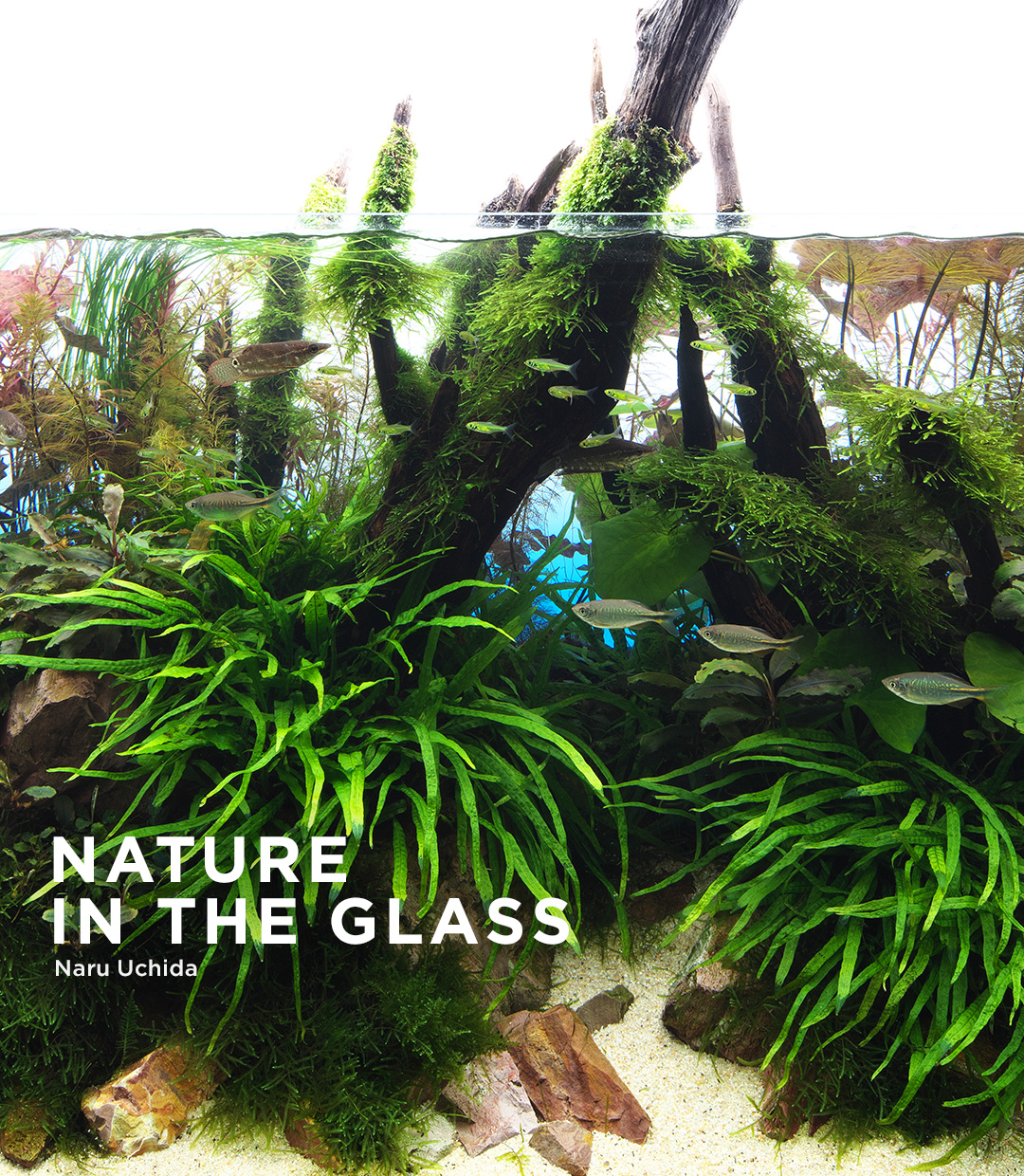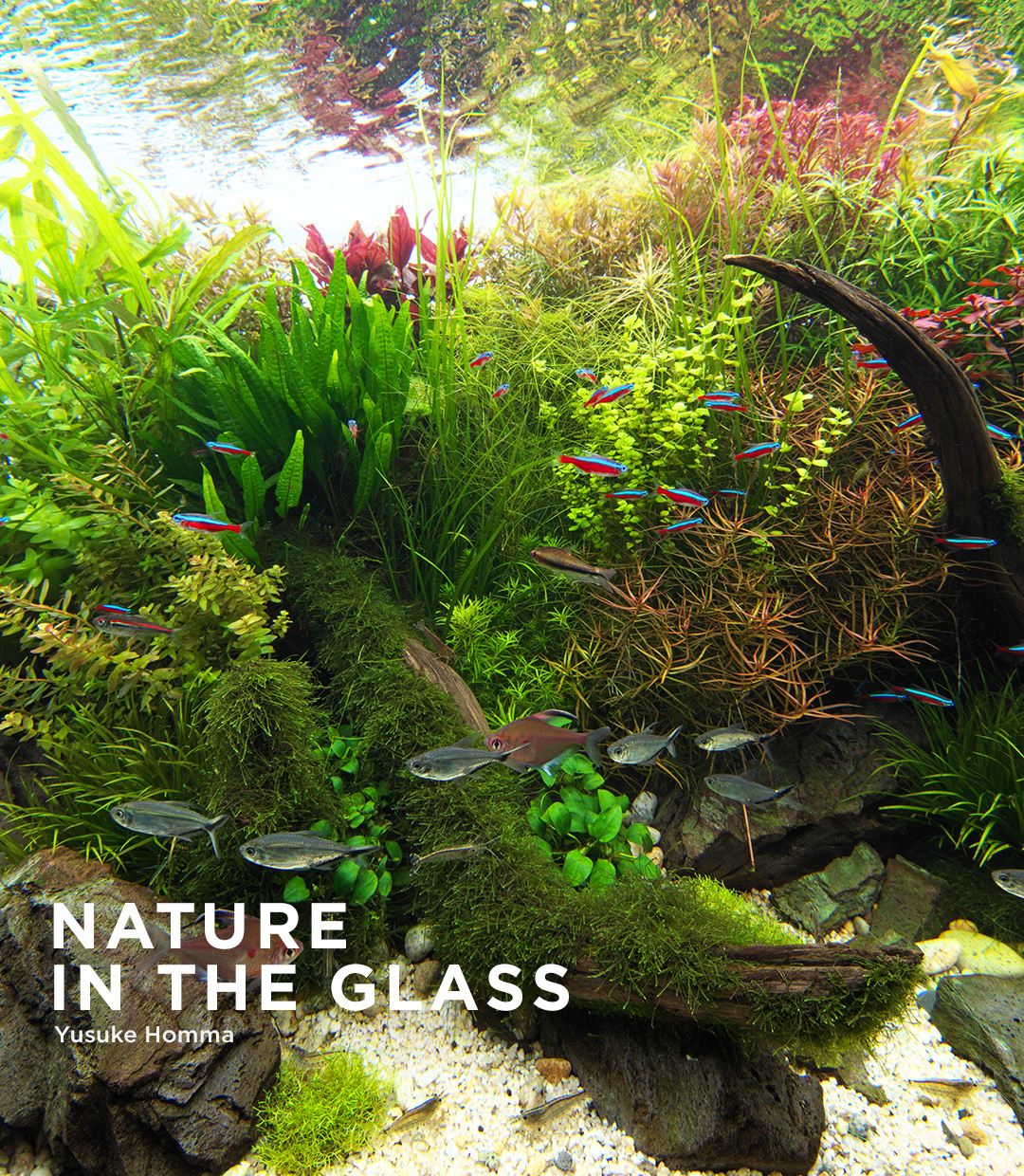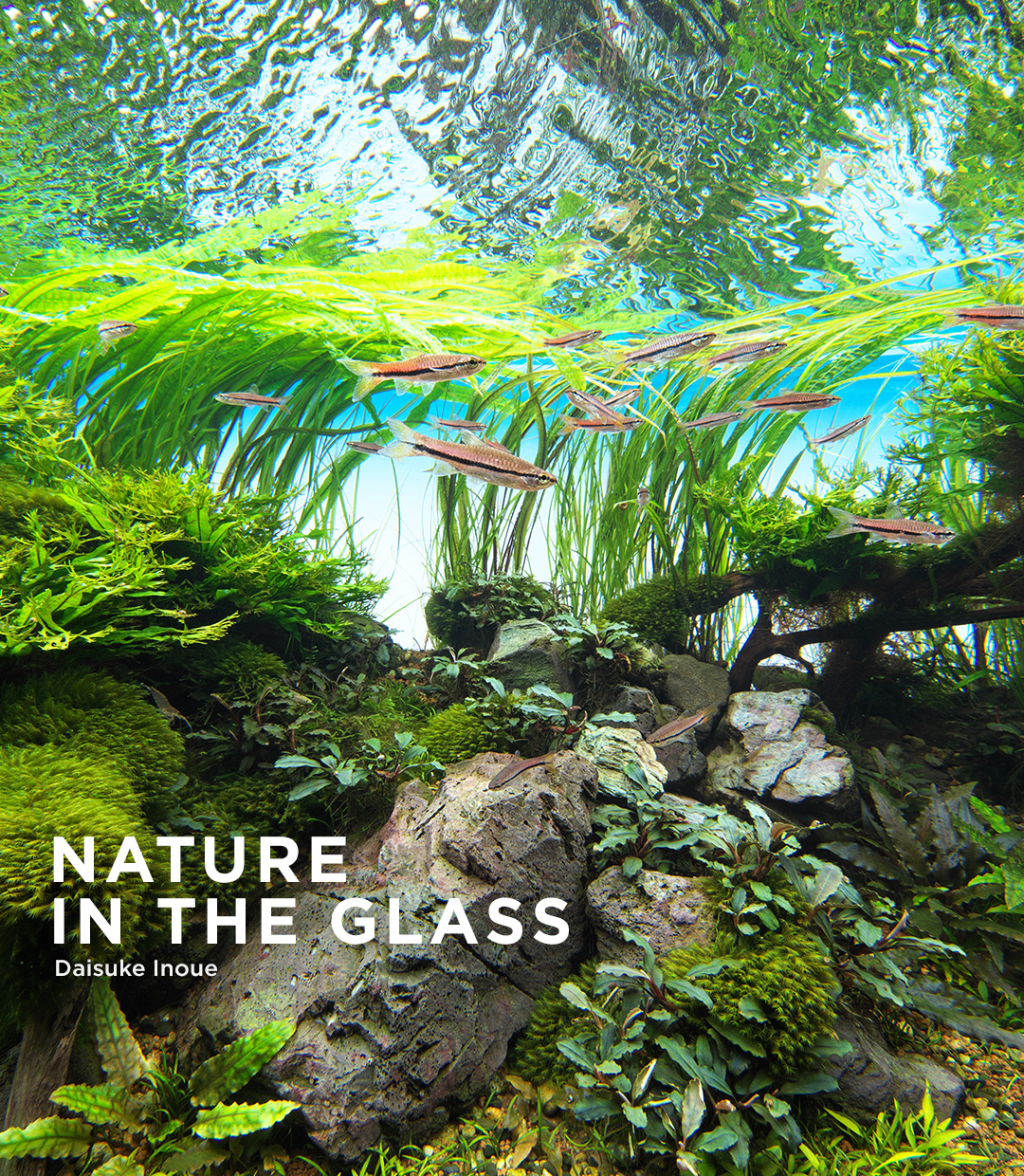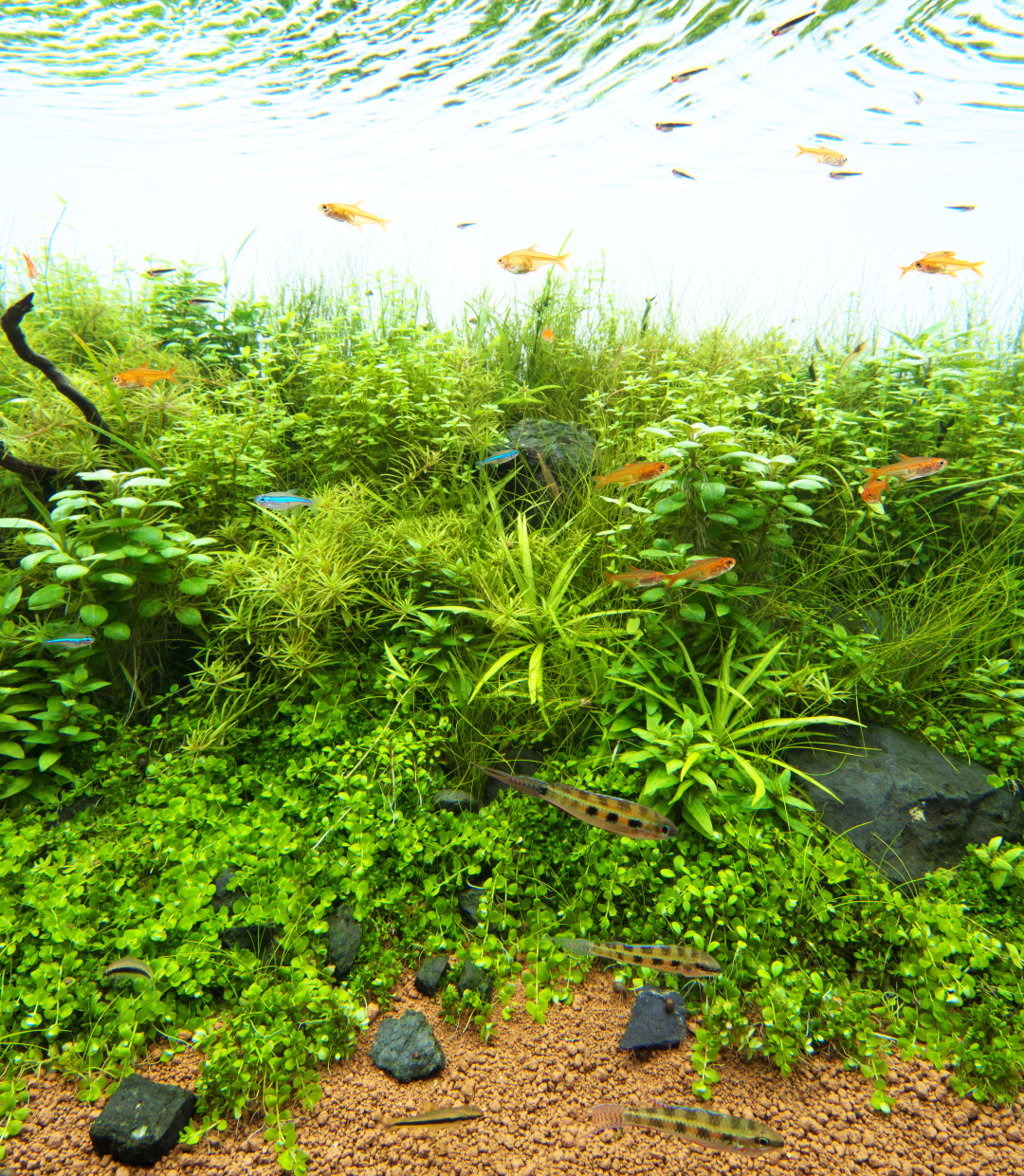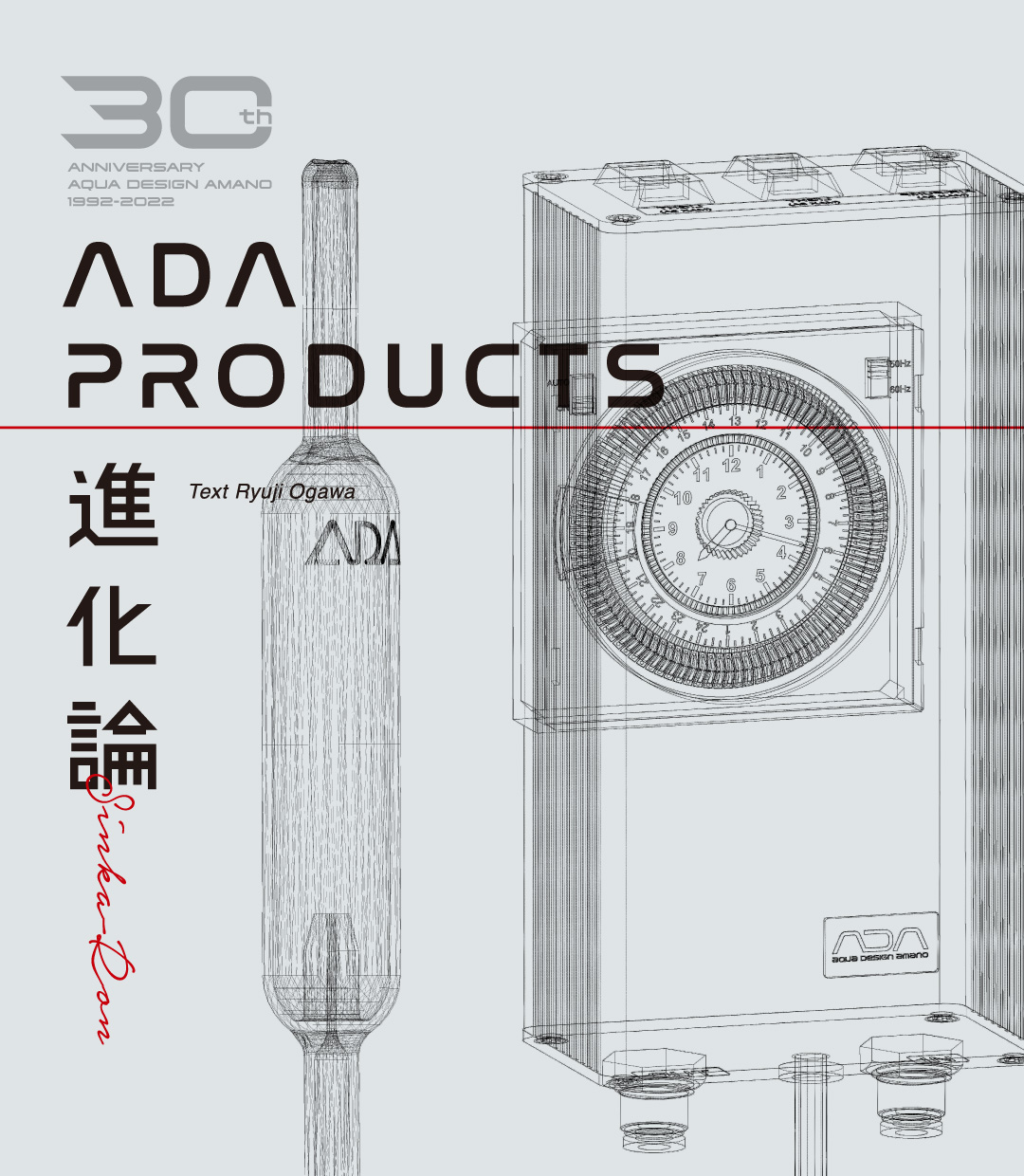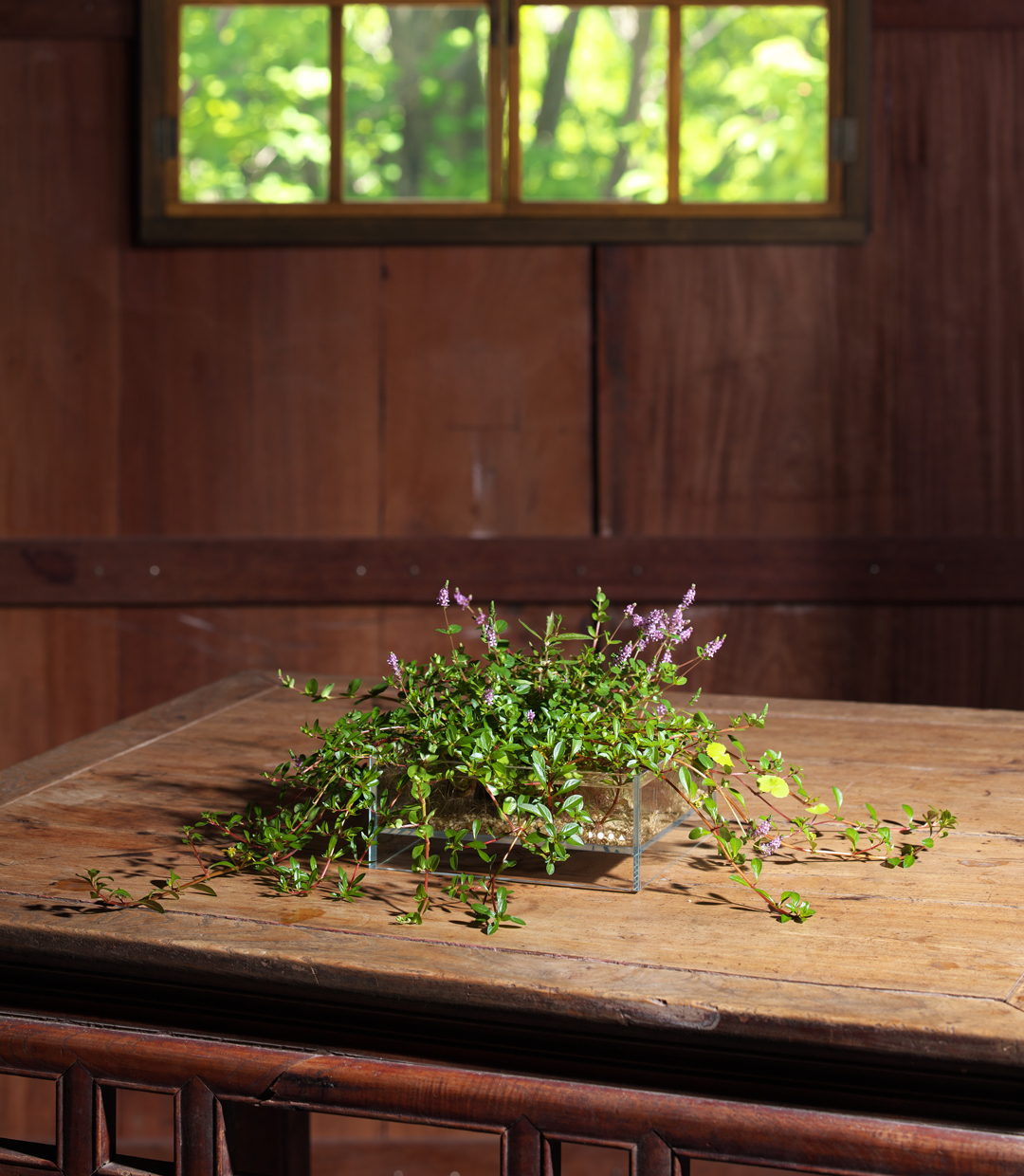2024.01.12
AOAO SAPPORO REPORT 02
“Scenes of underwater photosynthesis teach us the fundamentals of an ecosystem”
ADA Suikei Creator, Yusuke Homma
I have been impressed by the size of the viewing area of the AOAO SAPPORO project since we started planning for it; like a synthesis of an aquarium and an art museum, I feel it is a fitting atmosphere for Nature Aquarium (here on referred to by NA). In line with the production, I aimed for a NA with a layout through which one can learn about the cycles of an ecosystem. Plants take in carbon dioxide and through photosynthesis produce oxygen, which the fish breathe in. Bacteria break down the fish feces into nutrients for the aquatic plants. To spotlight photosynthesis, I decided to use Riccia fluitans.
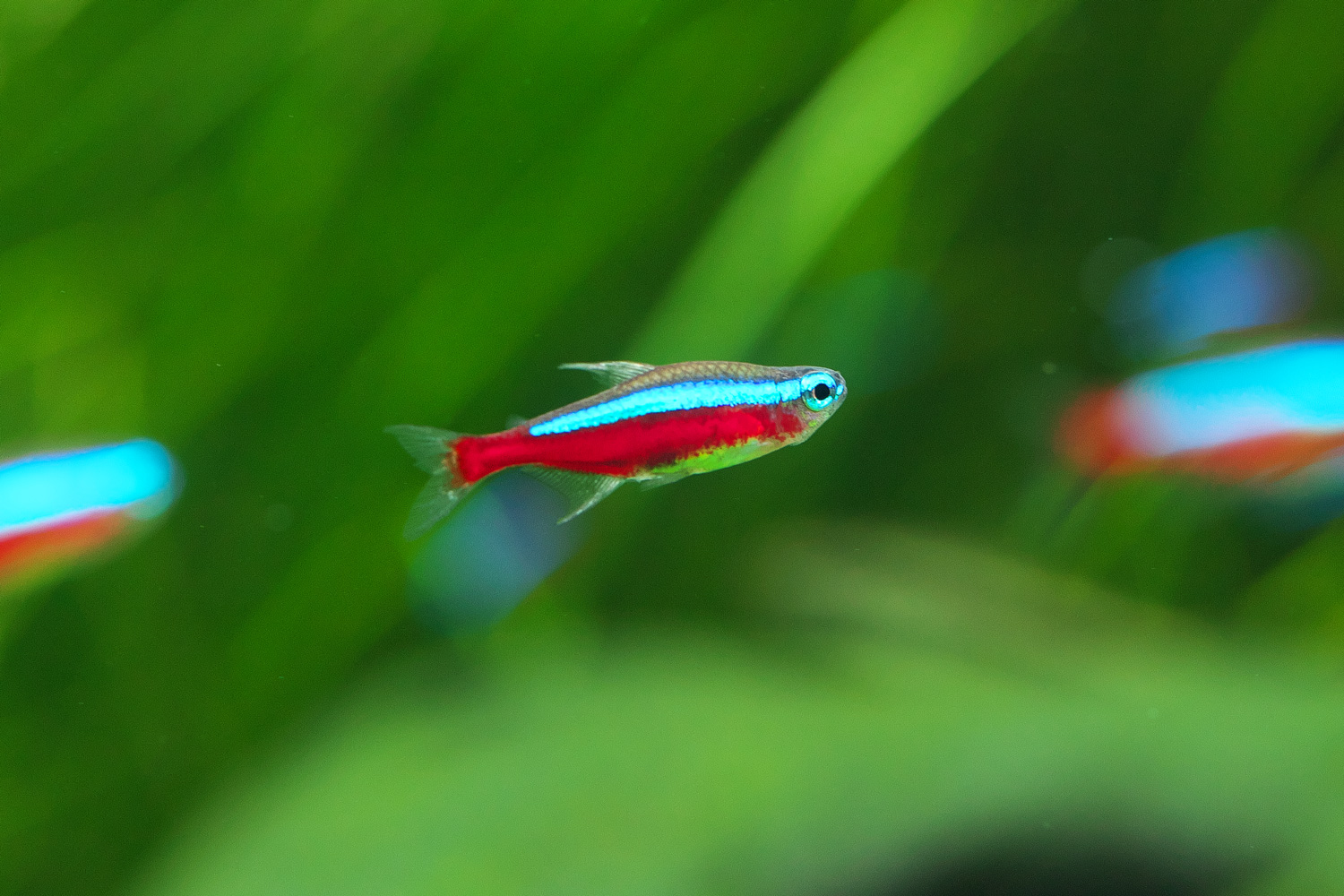
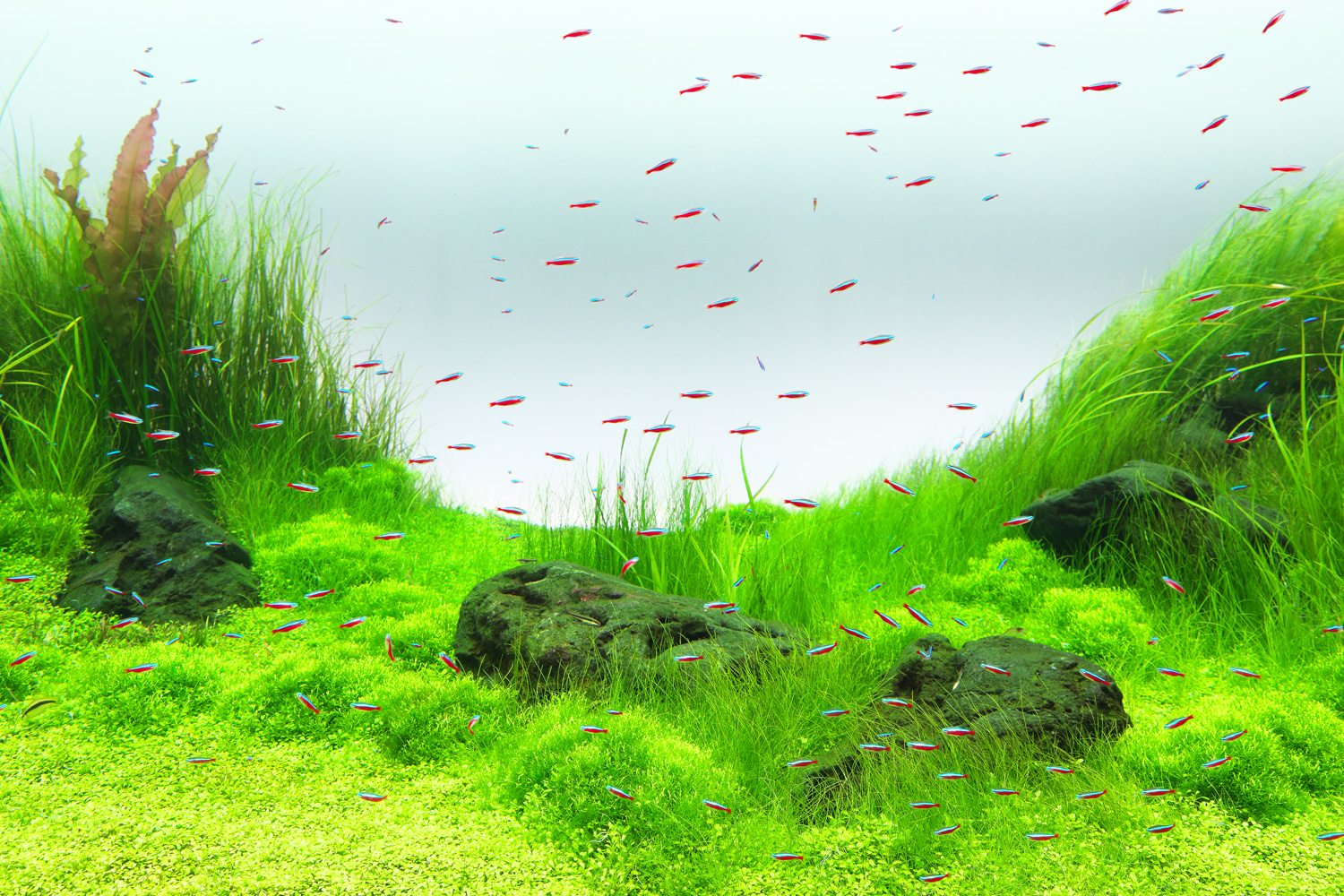
Using Hakkai Stones in a 7 metre wide tank, “Breezy Stonescape” was a challenging Iwagumi layout, but on top of that, keeping Riccia fluitans healthy in a huge tank is very difficult. From the planning stage there is the pressure of whether or not the maintenance team even can for a long time, but because I felt strongly that I want to show visitors hitherto unseen underwater scenes, like this panoramic tank full of bubble covered Riccia fluitans, I decided to plant them. As if to crush that decision, many tough days went by in which the bubbles we hoped for didn’t form. However, whilst assisting Amano on a photography expedition a long time ago, I did see bubbling Riccia fluitans growing naturally nearly 1m underwater- remembering our conversations and the conditions there I realised it must be recreatable, and so we went over our system. After much trial and error we managed to improve CO2 uptake efficiency, and fine tune things like liquid nutrient amounts. With an intravenous drip-like feed of small amounts of supplements over a long time, we could create an environment that would reduce irregularity in water quality. The water’s flow was the most important thing. By making minute adjustments to the four water spouting pipes we achieved a suitable flow across the whole foreground. The bubbles of Riccia fluitans which only worked partially at first now make the whole aquascape shine in its entirety. “Garden of Light and Water Lilies” is another place where you can visually observe photosynthesis. The floating water lilies spread out, taking in the strong light to photosynthesise, and a part of the oxygen being produced can be seen as the bubbles building up on the leave’s underside. We wanted to convey the charm of the peculiar submerged view of water lilies, looking up at the leaves from the depths rather than the way one normally admires them, looking down on them. Whilst I very much do want people to know about the conceptual and technical side of NA, most of all I hope that seeing the beautiful forms of aquatic plants will give people an interest in and appreciation of nature.
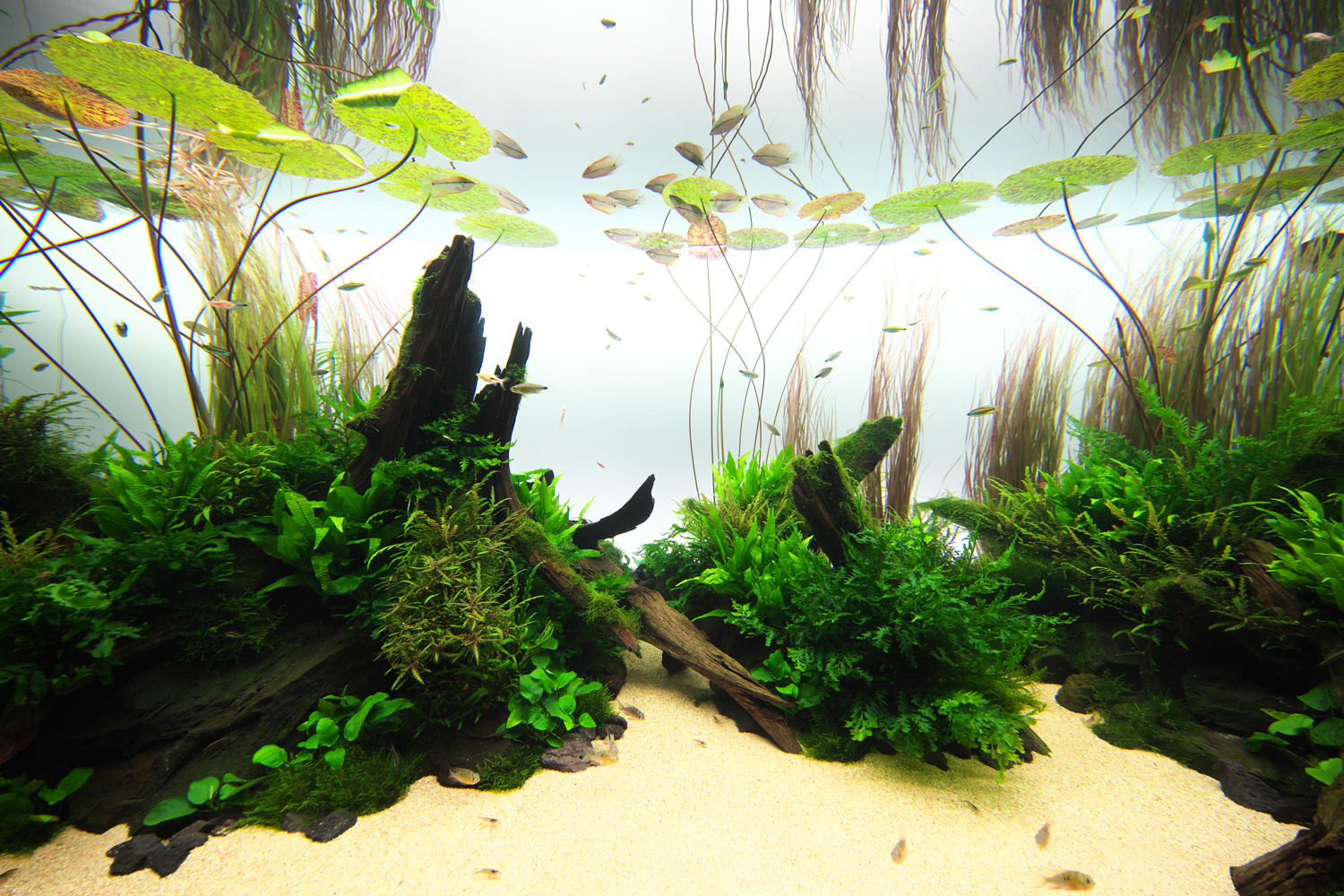
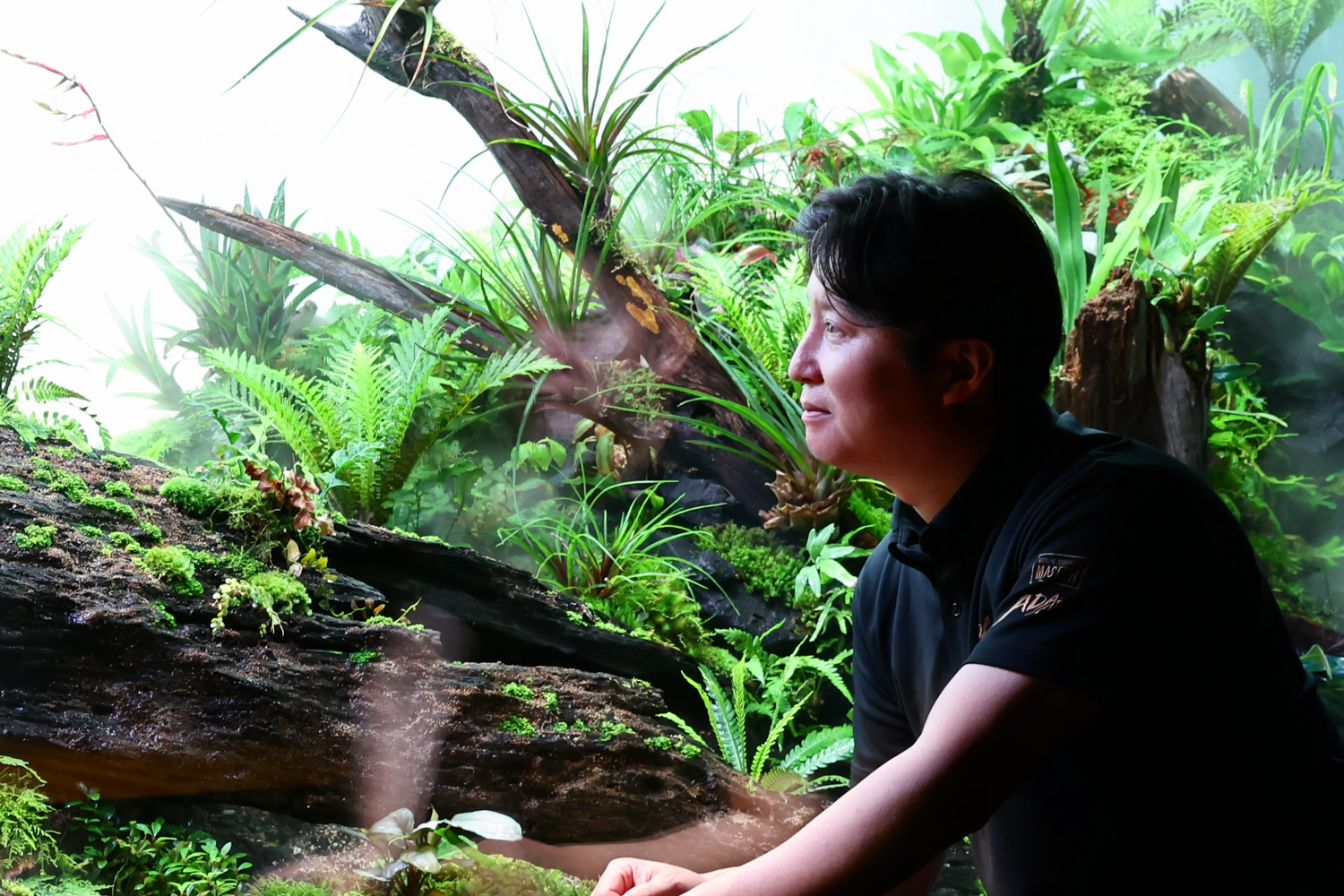
“The unseen precision of the maintenance work is visible in the aquascape’s beauty”
ADA Suikei Creator, Naru Uchida
The first time I saw an ADA Nature Aquarium, the beautiful, luxuriant growth of vividly colored stem plants left a deep impression on me, though it was before I entered the company. My work now, “Autumn Leaves Under Water“, in the main part of the NA area, is the first tank visitors see as they enter. I would like first time visitors to experience the intrinsic vibrancy and beauty of aquatic plants like I did, so, with an aim to weave together the unique Japanese aesthetic sense of nature with an expression of the four seasons, I cultivated an abundance of sem plants in a composition true to aquascaping fundamentals. “Autumn leaves style” is how I describe my own style, but my inspiration comes from all the beautiful autumn scenery of places I visit for my interest in photography. I think that this, going oneself into nature and coming out to express what you learn in a layout, is an important process for these NA creations. In this work, an expression of autumn scenery, from the way through which you show the red stem plants to the entire maintenance method, I have searched in my own way for an aquascape I can believe in. Moreover, it is something created, from the strength of enthusiasm, to renew the visitor’s image of aquatic plants. To extract the vibrancy of red stem plants, it is important to add the appropriate liquid nutrients, such as potassium and iron. In the early stages of setting up the layout, we set the types and amounts of nutrients to go in the tank by considering the water quality, the algae growth conditions, the growth speeds of the stem plants, etc. Then we kept control of things like plant growth and took algae outbreak avoidance measures with the Solar RGB lighting system’s adjustability mechanics, keeping a surface level illuminance of between 5,500 and 13,000 Lux and adjusting whenever needed. To do aquascape maintenance this thoroughly, ADA and Otaru aquarium’s joint maintenance team approach all maintenance tasks with an understanding of the production intentions of us Suikei creators. This teamwork, it is no exaggeration to say, is the underpinning of the beautiful aquascapes. I believe that it is this day to day, steady work which is what births profundity.
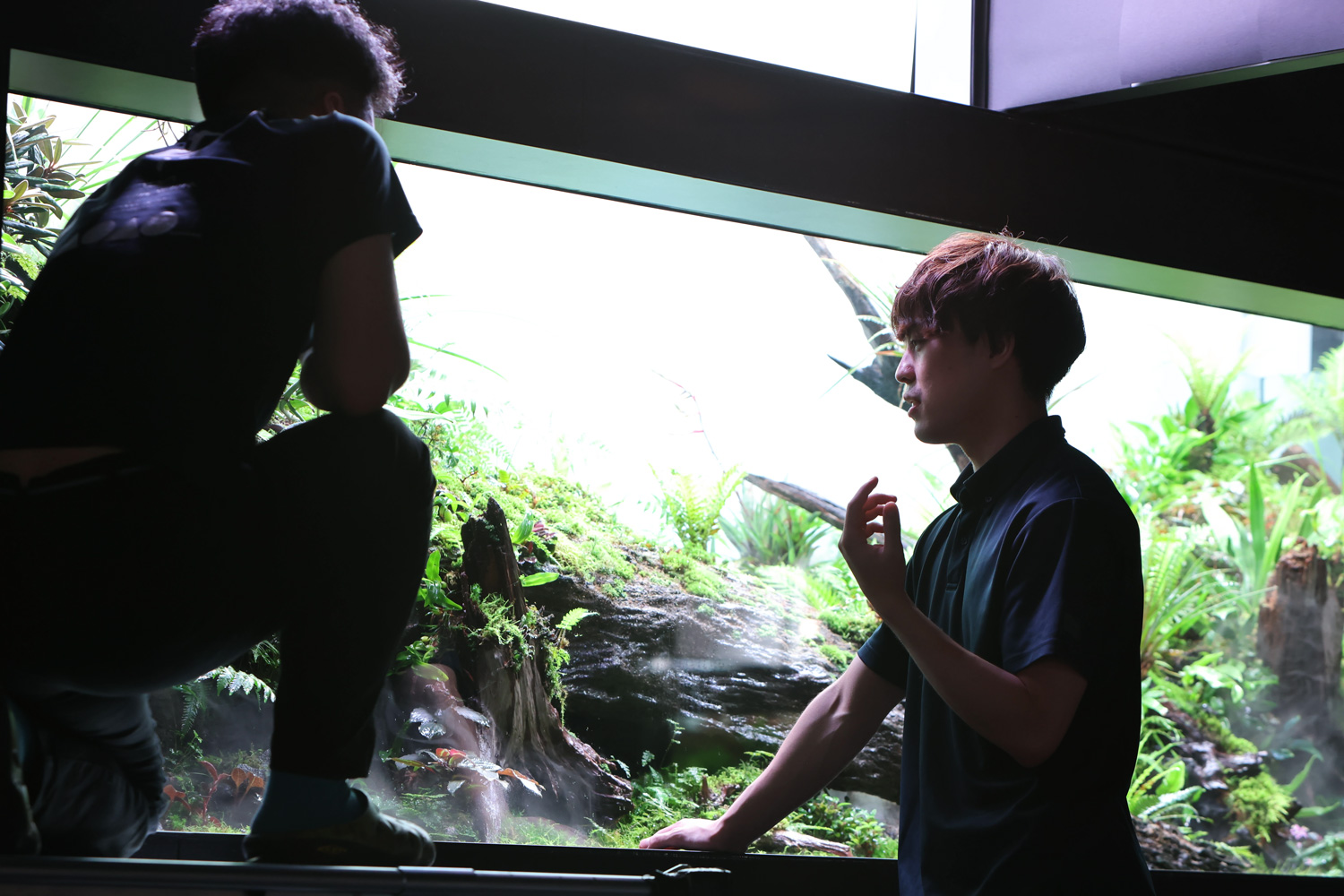
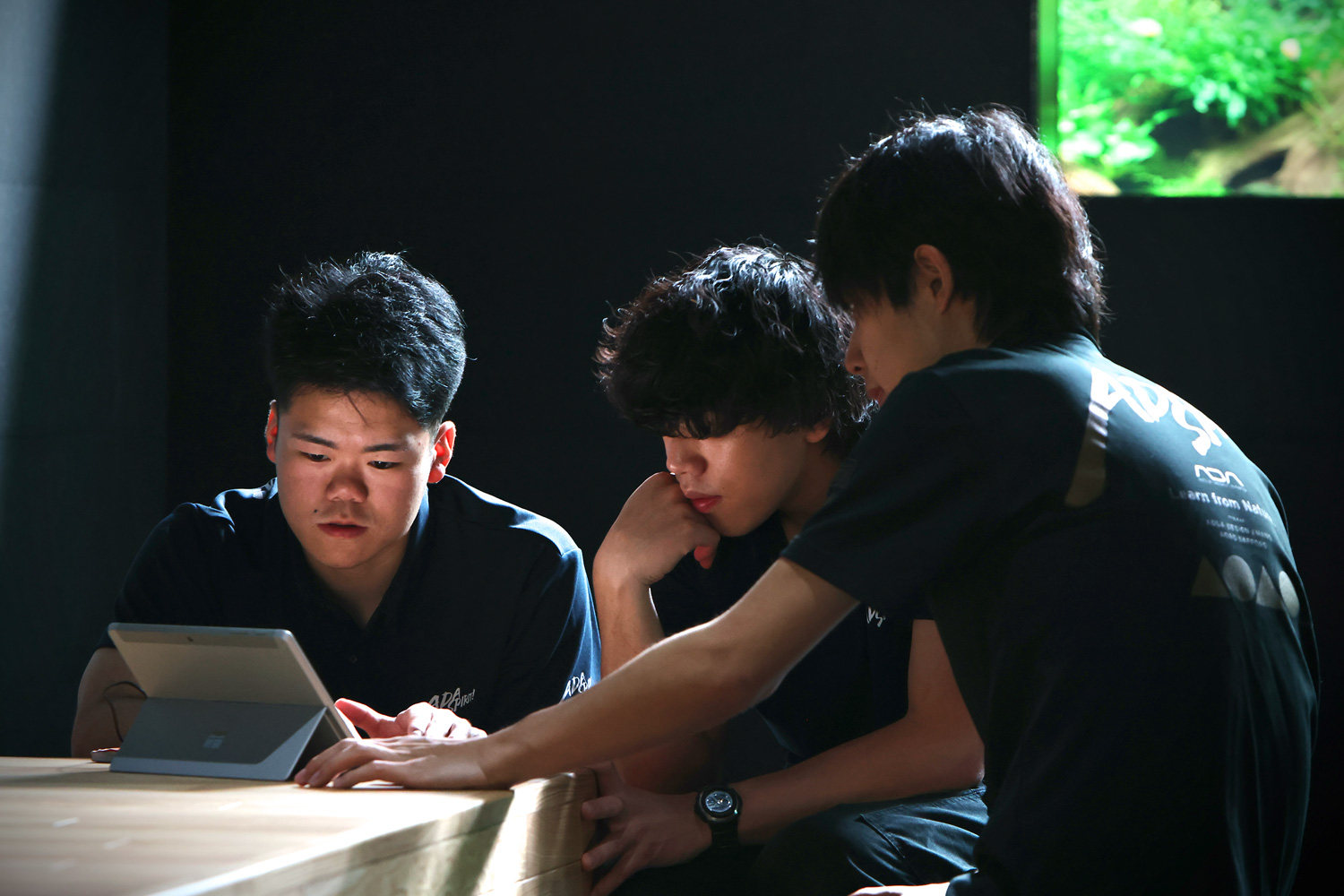
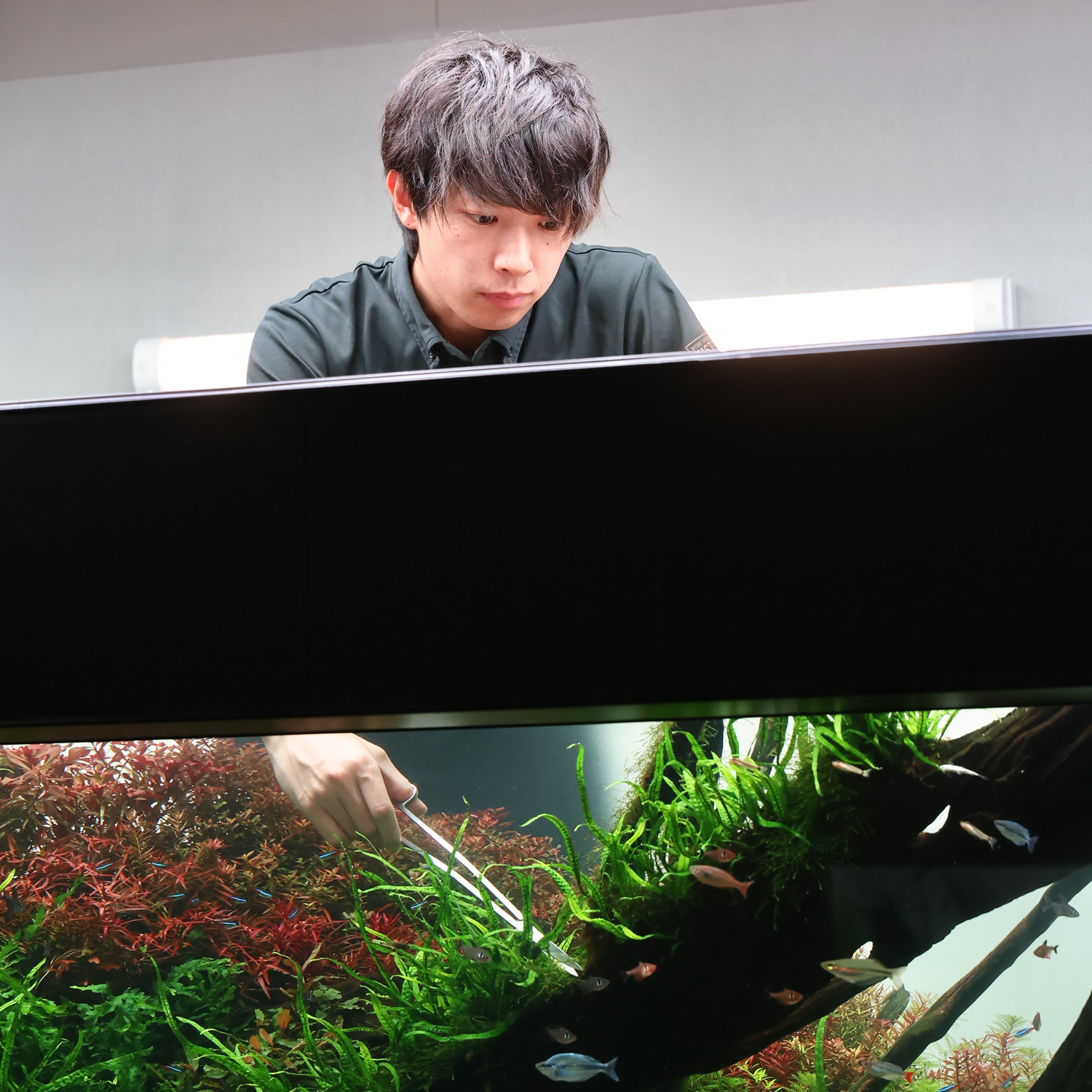
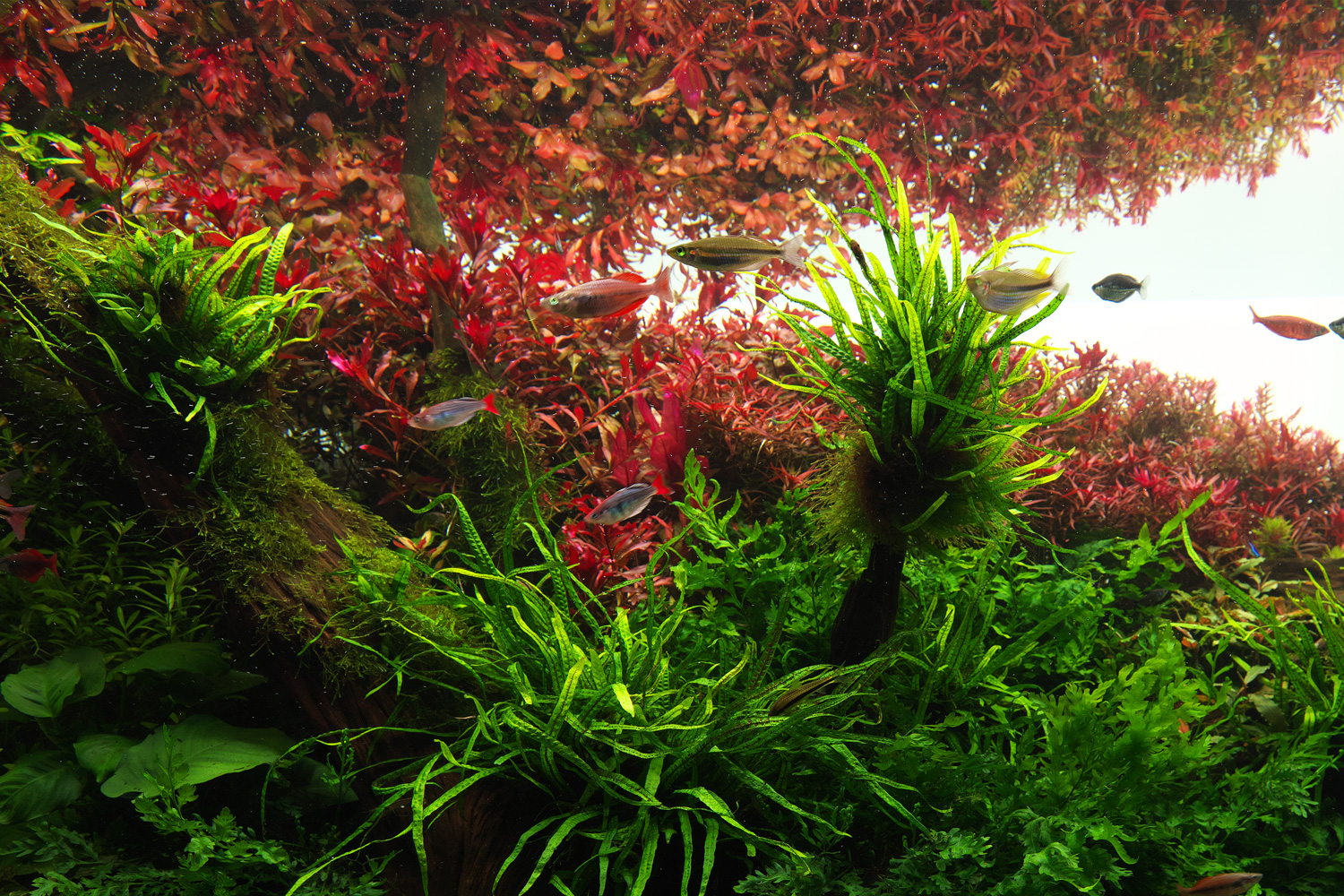
![[ STYLE OF EPIPHYTIC PLANTS ] Effective use of epiphytic aquatic plants in layout scenes](https://www.adana.co.jp/wp-content/uploads/sites/3/2024/04/ep_img_ogp.jpg)
